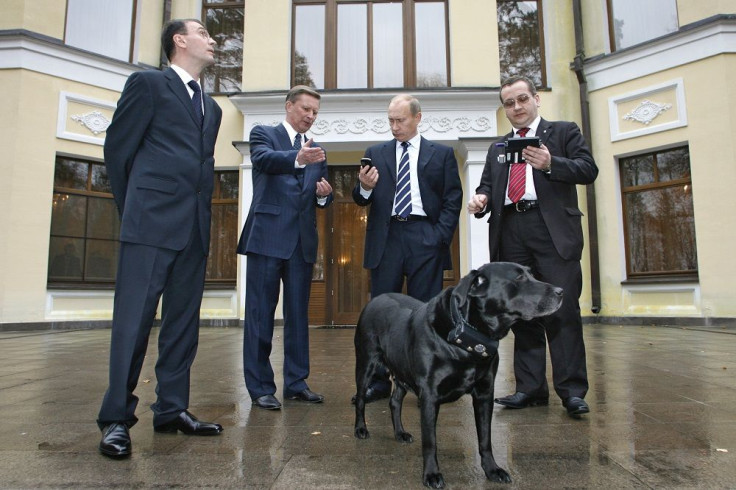‘Internet of Animals’ tracks down cows’ fertility rates, pets’ safety and lifespan of trapped sharks

The much-anticipated Internet Of All Things, which will link one smart machine to another to provide their owner a comfortable life based on an analysis of their behavioural data, is actually taking place – this time in farms, animal shelters and protected coral reefs. Given that it is the animals that are being studied by computerised measuring devices, some analysts are suggesting that at least the “Internet of Animals” is upon us.
Not surprisingly, basic examples are patented collars that will be issued to lovers of dogs and cats who want to ensure that their pets are alive, safe, and well. According to the Sydney Morning Herald, two of these are similar in function and design. These two collars are connected to the owner’s devices like a smartphone app or a GPS; if the dog wanders off outside his designated space or does something unpleasant like humping a visitor’s leg, the owner can call the dog back by pressing a button on his device that will send an electric shock to the animal through his collar. Needless to say, these two collars got their fair share of criticism for their inhumane treatment of animals.
The third computerised dog collar does away with such deterrents and instead is used to monitor how well the animal has acclimatised in an animal shelter. The collar, again connected to an app, sends real-time information such as sleeping patterns, restlessness and length of snooze time.
Meanwhile, the Japanese electronics company Fujitsu have redesigned the standard pedometer to track down the fertility level of cows, providing an accurate service for farmers who often find the mating cycles of their animals a hit-and-miss game. Cows that are ready for insemination or breeding walk more steps than those which are not --- and one giveaway is that these steps increase during the cows’ walk during the evening. In a report by Recode , these cow-designed pedometers tip off the farmers which female cows walked more than their usual during the night. The farmers then separate these cows for mating with their male partners, to happily find out that their pregnancy rates have increased.
These smart machines that herald the beginnings of the Internet of Animals may not only be able to predict the coming of new life, but they are also being used to study animal movements that can spell these creatures’ life or death; the objective of the study is to prolong life and eliminate the equipment or practices that can hinder or squash it. The IOT Journal names the pop-up satellite archival tags (PSATs) that monitor the lifespan of sharks caught in the bycatch fishing in Thailand. One concern of ecologists about this type of fishing is that the sharks, after being tethered underwater for some time to the fishing boat that had caught it, may suffer harm once the fishermen suddenly cut it loose and throw it back without warning into the sea.
The PSATs, issued by Wildlife Computers, might resolve this matter as they are imprinted by ecologists on certain sharks for a period of one month. The tags routinely collect information about the shark’s temperature and speed of movement as it swims the seven seas; it also registers the depth of the ocean bottom that it is plumbing. If the shark is caught, the PSAT does take notice that it has either slowed down or stopped altogether. If the tag releases itself from the shark before its 30-day period is finished, then the scientists monitoring its movement presume that it has died.
“We live in a data-driven world and professionals in any given industry check and research for information before they make a decision,” points out Dom Einhorn, co-founder and CEO of finance and business news app Born2Invest .
The app and its site have broken ground in the news business by providing real-time user-friendly information, culled by journalists from around the world, to a growing number of international readers who regularly update themselves on their favorite news categories.
“Facts, figures, statistics—all that is necessary for them to make themselves competitive in their career while keeping themselves informed of trends and developments that can assist them in shaping office policy, investing in stock, or buying real estate,” Einhorn added.
The farmers, animal shelter managers, and environmentalists who have found smart devices a useful tool in taking care of the animals and fish will certainly agree. If the results prove encouraging, it is safe to say that the Internet Of Animals will expand its kingdom, expecting an influx of fish, fowl, and herd, and their data-driven but compassionate caretakers.





















